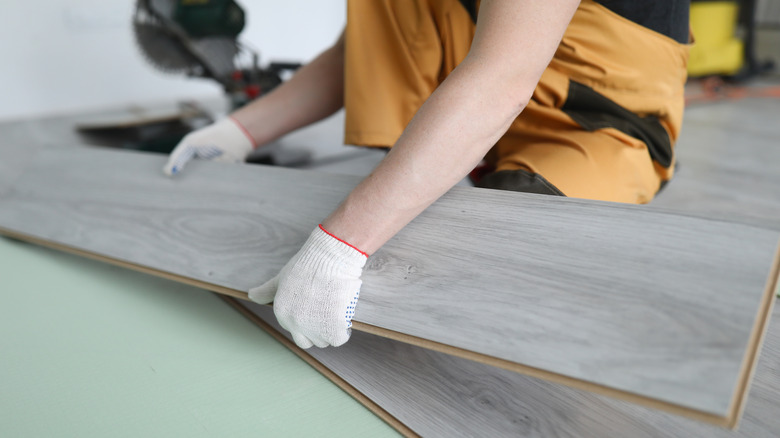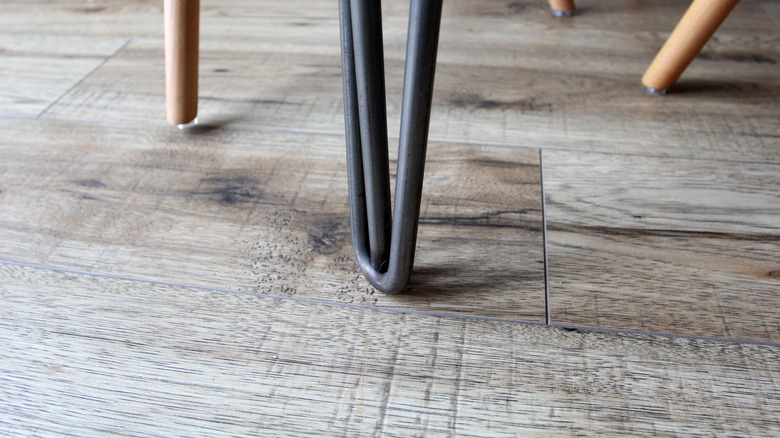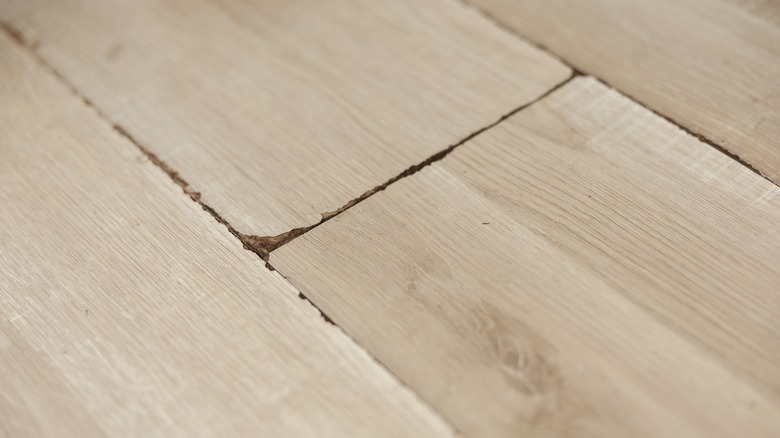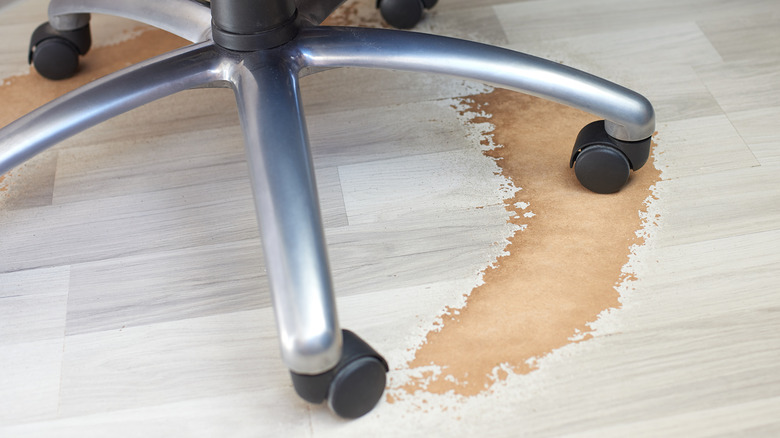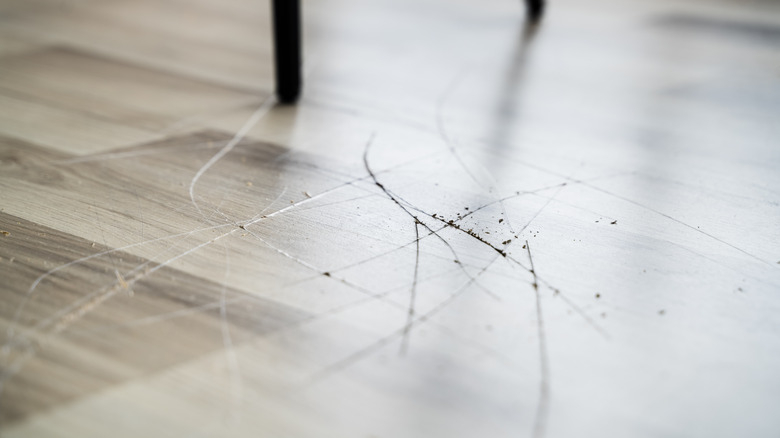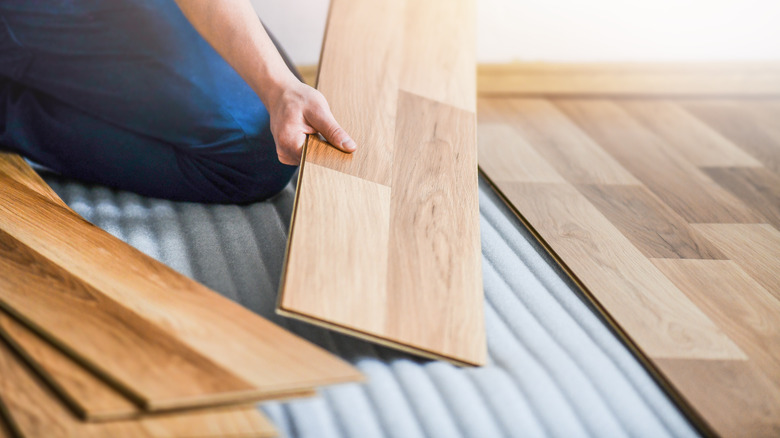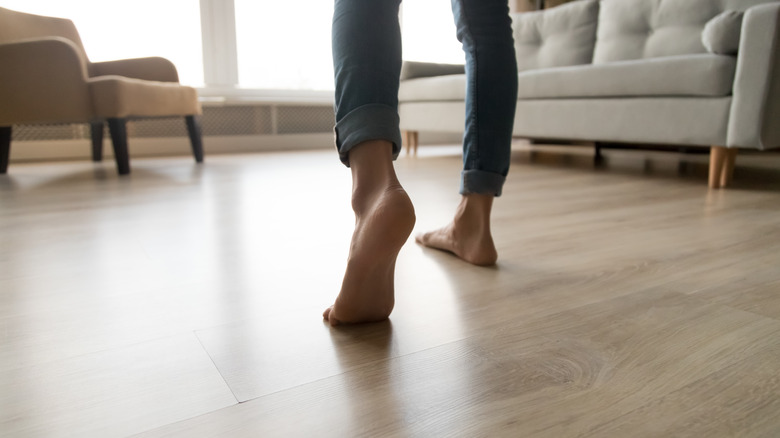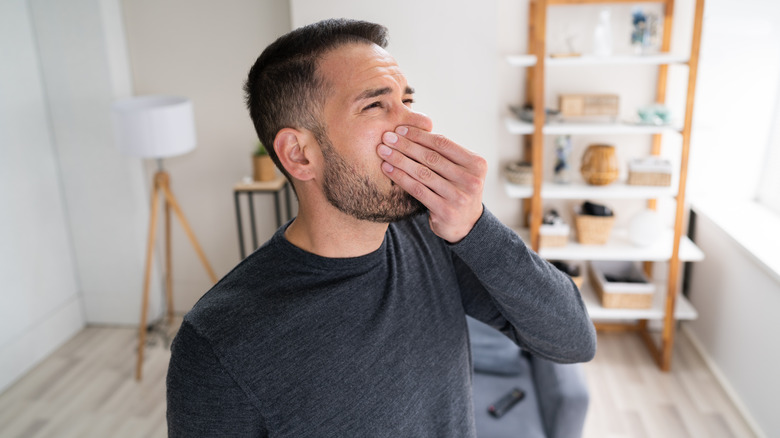Telltale Signs It's Time To Replace Your Laminate Flooring
Laminate flooring is very popular due to its aesthetic appeal and high durability factor, but you start to see problems as it ages. The first warning sign that your floor is getting older is it'll look dull and lose that pretty sheen, leaving it looking lifeless. Unlike what many people think, this isn't purely an aesthetic problem. Instead, it signals that your laminate's protective layer is wearing away, making it easier to damage. Structural issues also pop up in older laminate flooring, like shifting or soft spots when you walk over it, and this can be dangerous because it makes it easier to trip and fall. On the more severe end, it could warn you that you have subfloor damage.
Seam separation or the flooring lifting at the edges also hints that there are more significant issues with your flooring, like environmental stress or a subpar installation. The noise also comes into play, as your laminate might begin to creak and groan as you walk on it. All these things tell you that your laminate flooring is at the end of its lifespan and that it might be time to replace it. Here is an in-depth look at the telltale signs, along with tips on how to address those problems.
Surface sheen loss
Experienced contractors claim that a dull laminate board lacking its original sheen suggests it's time for replacement or refinishing. Surface sheen loss or a cloudy look is a common problem as laminate ages, and it's usually a result of long-term wear and tear. Frequent foot traffic gradually erodes the glossy finish of laminate flooring, leading to dullness. This subtle change will significantly impact your room's appearance by aging it or making it look less vibrant. Look at your laminate by comparing high and low-traffic areas to see if there's a difference in glossiness. If polishing or cleaning doesn't restore the shine, the wear might be deep, suggesting the floor is beyond repair.
Regular foot traffic gradually erodes the protective layer of your laminate, especially in high-traffic areas like living rooms and hallways where wear is constant. Also, not cleaning correctly or using harsh chemicals on your laminate will strip the sheen, which is why you should never use bleach. Excessive exposure to sunlight, with its UV rays, can further degrade the floor's finish. To prevent this issue, use the correct cleaning products (sans waxes and harsh chemicals), shield your floor from direct sunlight exposure with curtains or blinds, and put rugs over high-traffic areas.
Warping or buckling
When your laminate flooring starts to buckle or warp, this is an indicator that you have to replace it. You can spot this one quickly because the boards don't lay flat on the floor. Instead, they'll look raised, distorted, or misshapen in problem areas. This shape change impacts your floor's appearance and is a safety risk because you can trip. Take time to inspect your flooring regularly to see if you notice any gaps in the boards, sections that don't sit flat to the subfloor, or edge issues. If you have these issues all over the floor instead of being contained to a small area, this indicates that it's time to replace it. Catching these issues early reduces the chances of damaging your subfloor.
Flooring contractors share that some of the biggest causes of buckling or warping are temperature fluctuations and moisture exposure. Laminate can be sensitive to moisture damage, and it can seep into the flooring's core or seams, making the boards swell. High humidity levels, spills, and water leaks are common moisture sources. To stop this from happening, clean up any spills as soon as they occur. If humidity levels are high, add a dehumidifier in the room. Laminate flooring expands and contracts when the temperatures fluctuate, and buckling happens if your installer doesn't leave gaps around the edges of the room to accommodate this. Check for water damage signs or temperature stress, especially around appliances, windows, or doors.
Peeling or cracking surfaces
Laminate flooring can start to peel or crack with age, even though the top layer is designed to resist considerable wear. While they start as tiny cracks, they can quickly become larger peeling areas. This makes your floor look worn and shabby, and since this is the protective layer, peeling it away makes the underlying materials vulnerable to more damage. When you look at your flooring, pay close attention to areas that people walk on the most or those that have direct sunlight exposure because these are the first to wear down. If there are extensive peeling or cracked areas, it's a good idea to replace the whole floor instead of fixing it piece by piece.
Regular foot traffic will wear the laminate flooring's top layer, especially if you clean with harsh chemicals. While this wear is normal, it can break down faster if you don't know how to care for it properly. For example, abrasive cleaning brushes or tools will also cause tiny scratches in the top layer. To prevent this, use laminate-flooring-specific cleaning products and avoid ammonia-based or bleach cleaners. Also, clean with soft-bristled brushes or mops to make your flooring last longer.
Deep scratches and chips that are difficult to clean
Deep scratches or chips in your flooring can quickly go right through the protective surface layer and allow the material under it to get damaged. As these problem areas worsen, cleaning your floor is difficult because grime, dust, and dirt get stuck and start to build up, making each time you mop or sweet less effective. Regularly inspecting your floors will help you spot these issues, and they'll be more noticeable in darker flooring. If you see chips or scratches, take note of how deep or long they are. If they're all over and make it hard for you to clean properly because your laminate deteriorated, it's no longer giving you the quality and aesthetic appeal it once did.
Heavy foot traffic is one of the biggest reasons why chips or scratches appear on your flooring. Dragging furniture across it to rearrange the room or not keeping your pet's nails clipped can also cause scratches or gouges. All of these things stress your floor, leading to wear and damage. To minimize any damage, get protective pads to stick on the bottom of your furniture's legs, keep your pet's nails short, and have a no-shoes policy. Gently mop and sweep the laminate routinely to keep things like small pebbles or cat litter off the boards, which can leave small, damaging knicks behind. Finally, if you do get a few minor marks, fix chipped or scratched laminate using products like crayons or putty. This will not only make the surface look better, but will protect the exposed layer underneath.
Outdated aesthetic
If you notice that your laminate flooring style looks dated or doesn't match your current home decor, replacing it can refresh the room. Flooring is critical to any interior design, and having an outdated color or pattern can age your room. This disconnect is very noticeable with homes that have undergone extensive renovation or redecoration. Look at your flooring's visual impact. Does it clash with your modern updates? Maybe it represents a decade or design trend you don't like anymore. If the answer is yes and your laminate flooring is making your home look dated rather than adding to it, update it.
For example, laminate flooring came back with a vengeance in the mid-1990s, and not everyone decided to install luxurious planks. Instead, many people decided to install faux-tiles or laminate that mimics a stone look. These styles can be hard to integrate into a modern house today. If you desire to get a contemporary, fresh look and can't achieve it with your old floors, that alone might be a telltale sign it's time to replace them if you have the budget.
Soft spots or movement
When you walk on your laminate flooring, does it feel unstable or soft? Flooring specialists say soft spots or areas where your floor feels like it's shifting or moving when you step across it can point to underlying issues. This integrity change is both a comfort concern and a safety issue. If left unchecked, it can continue to deteriorate. Walk over different areas of your flooring and pay attention to any firmness changes. Check for sections that flex or compress more than usual, and listen for odd sounds. If these issues worsen or are all over large sections of your laminate, this is a warning sign that you have structural problems that need immediate attention.
Specifically, it can be a clue that you have subfloor deterioration or damage. Subfloor damage is common with moisture problems, like high humidity or leaks, because it weakens the laminate's underlying support system. The moisture can come from several plumbing sources, like spills, leaks, and basement or crawl space moisture retention. Another cause of soft spots on your floors is the laminate material, which can break down due to poor installation, age, or defects, causing it to move and shift. It is critical to figure out the root cause and address it, whether this means replacing your subfloor, fixing moisture issues and leaks, or replacing your flooring.
Unpleasant odors
Persistent, foul odors coming from your laminate flooring are usually an indication that you have to replace them since they hint at deeper issues with your flooring. For consistently foul or musty odors that come from the floor, look at areas where the smell is the strongest. See if you can spot any visible signs of discoloration or damage to your laminate. If cleaning the surface doesn't take care of the smell, or it comes back, you typically have a problem under your flooring.
For example, trapped moisture under the flooring creates a damp environment for bacteria to thrive. Moisture can easily seep into your laminate flooring due to spills, leaks, or higher humidity levels, creating the perfect environment for mold and mildew to grow. This is very common in damp areas of your home, like bathrooms or basements. To fix these issues, take steps to control the moisture levels in your home, ensure you have good ventilation, and clean up spills immediately as they happen.
Allergen accumulation
If someone in the house has worsening allergy symptoms, especially when you go into a room with laminate flooring, it can indicate that the flooring is causing allergens to build up. Coughing, sneezing, or itchy eyes are common symptoms that can worsen if allergens get trapped in the flooring. Older laminate floors can trap pet dander, dust, pollen, and other common allergens, especially in areas you neglect to clean correctly. If regularly cleaning these areas doesn't improve these symptoms, look at the condition of your floors. See if there are cracks or chips where the allergens can get caught. Remember, if the floor shows signs of wear, it isn't keeping allergens out, negatively impacting your home's air quality.
Regularly and thoroughly cleaning every part of your floor — including vacuuming with a HEPA filter and damp mopping — will help reduce allergens in your home. However, if there is significant damage or signs of age, replacing the current flooring with a smoother surface is an effective way to treat your allergy symptoms.
